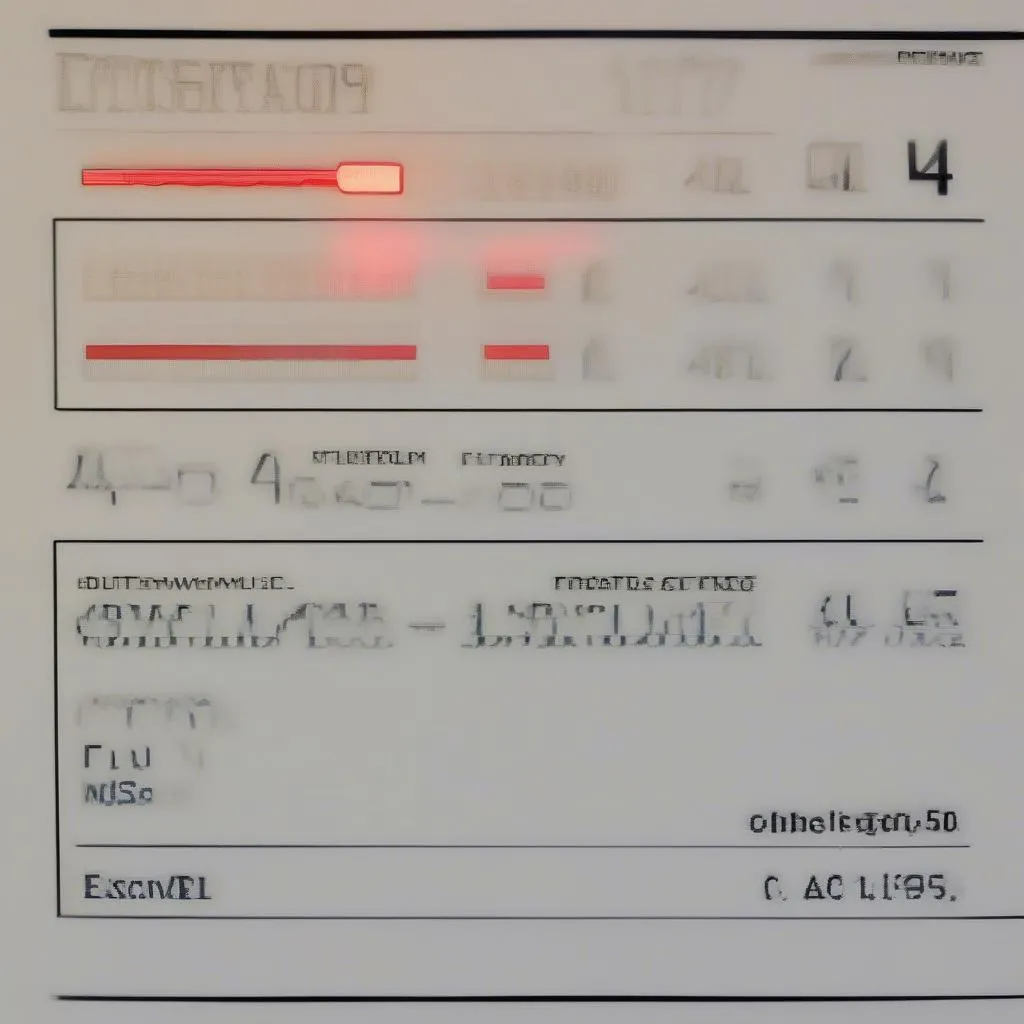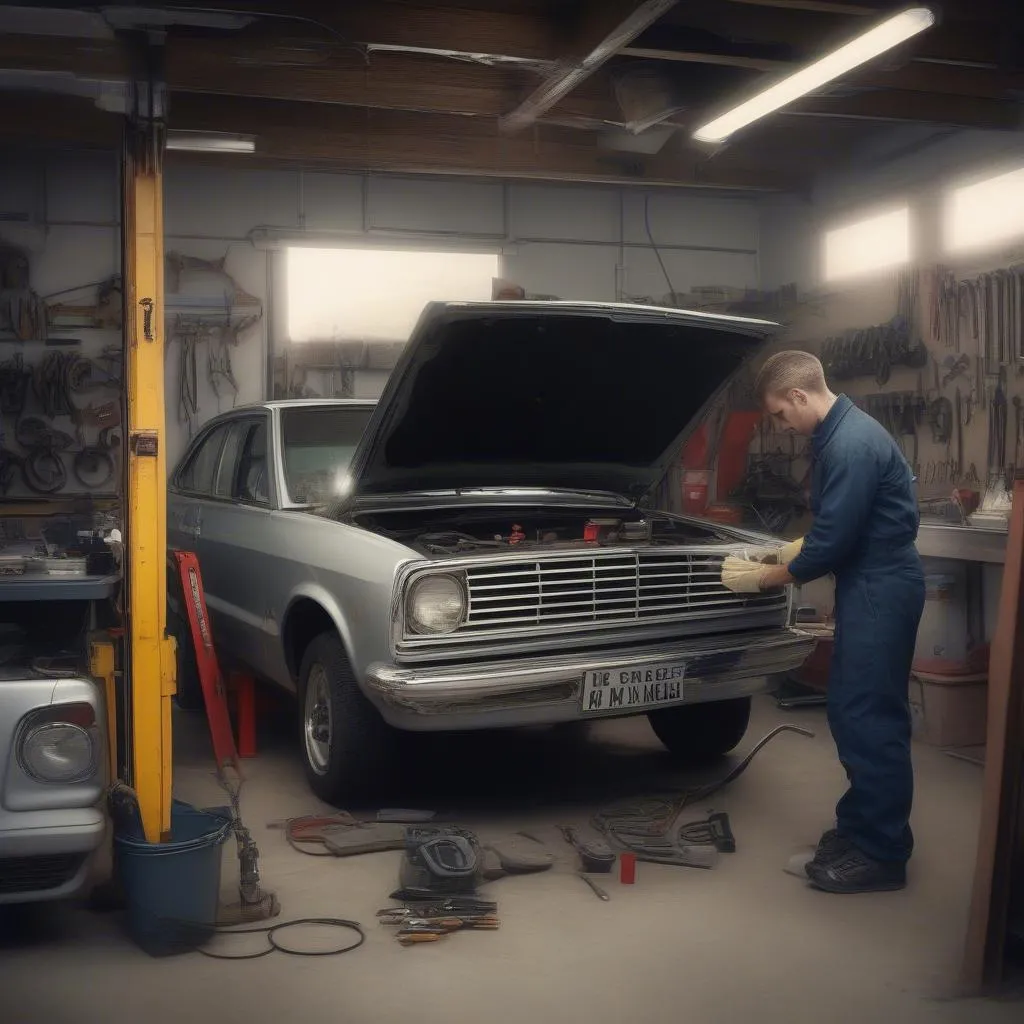Let’s be honest, seeing that dreaded “Check Engine” light illuminate on your dashboard is enough to send chills down any car owner’s spine. It can feel like a warning sign that something’s terribly wrong with your vehicle, but fear not! Most of the time, it’s not a cause for panic. While it’s true that a lit engine light could indicate a serious issue, it’s often a simple problem that can be resolved quickly and easily. In this guide, we’ll walk you through the steps on how to fix the engine light and put your mind at ease.
Understanding the “Check Engine” Light
From a Mechanic’s Perspective
For a mechanic, the “Check Engine” light is like a red flag, signifying that a problem has arisen with one or more of the car’s crucial systems. These systems are designed to ensure optimal performance and emission control, and a malfunction can affect your car’s fuel economy, power, or even lead to serious damage.
From a Technical Perspective
Technically speaking, the “Check Engine” light is triggered when a sensor in your car’s engine control unit (ECU) detects a fault. The ECU is the brain of your car, receiving information from various sensors and controlling critical functions. When a sensor detects an anomaly, the ECU stores an error code, illuminating the “Check Engine” light to alert you of the issue.
From an Economic Perspective
It’s understandable to worry about the cost of repairing a car problem, especially if you’re on a tight budget. The good news is that many “Check Engine” light issues can be addressed with simple repairs, saving you a significant amount of money in the long run. However, neglecting a potential problem can escalate the issue, leading to more complex and costly repairs.
Diagnosing the Engine Light: Why is it On?
The first step in fixing the engine light is to diagnose the problem. This usually involves using an OBD-II scanner, which is a small handheld device that plugs into your car’s diagnostic port and reads the stored error codes.
The Importance of an OBD-II Scanner
Think of an OBD-II scanner as a translator for your car. It deciphers the cryptic language of the error codes into a clear and understandable message. There are various models of OBD-II scanners available, ranging from basic to more advanced ones capable of clearing codes and analyzing data in real-time.
Finding the Root of the Issue
Once you have the error code, you can use online resources or a repair manual to determine the specific cause of the problem. The code itself is usually a good starting point, but it’s important to consider other factors like your car’s age, mileage, and driving habits.
The Role of Sensors
Many common “Check Engine” light issues stem from faulty sensors. These sensors constantly monitor various aspects of your engine, including fuel pressure, oxygen levels, and coolant temperature. A faulty sensor can send inaccurate data to the ECU, leading to the dreaded light.
When a Sensor Fails
Imagine your car is a complex orchestra, and each sensor is a musician playing a specific note. When one musician plays a wrong note, it throws the entire orchestra out of tune. Similarly, a faulty sensor disrupts the harmonious balance of your engine, triggering the “Check Engine” light.
Fixing the Engine Light: Common Solutions
Loose Gas Cap
This is the most common and simplest reason for the “Check Engine” light to come on. A loose or damaged gas cap can cause a leak in the evaporative emissions system, resulting in an error code.
Replacing a Faulty Sensor
If the problem lies with a faulty sensor, you’ll need to replace it with a new one. The sensor’s location and replacement process can vary depending on the make and model of your car.
Cleaning the Mass Airflow Sensor
The mass airflow sensor measures the amount of air entering the engine, providing critical data for fuel injection. Over time, the sensor can become dirty or clogged, affecting its accuracy. Cleaning it can often resolve the issue.
Replacing Spark Plugs or Wires
Spark plugs ignite the air-fuel mixture in your engine. Worn-out spark plugs or damaged spark plug wires can lead to misfires, triggering the “Check Engine” light. Replacing them with new ones is usually a quick fix.
Performing a Catalytic Converter Inspection
The catalytic converter is part of the exhaust system, responsible for reducing harmful emissions. It can become damaged or clogged due to various factors, leading to a “Check Engine” light. If the converter is faulty, it’s usually best to have it inspected by a mechanic.
When to Seek Professional Help
While many “Check Engine” light issues can be fixed with DIY solutions, some cases require the expertise of a trained mechanic. For example, if the problem involves complex engine components, such as the engine control unit (ECU), fuel injectors, or the ignition system, it’s best to leave the repair to a qualified professional.
Tips for Preventing Engine Light Problems
Regular Maintenance
Regular maintenance is crucial for preventing engine light problems and keeping your car running smoothly. This includes oil changes, air filter replacement, and spark plug replacement at recommended intervals.
Avoid Cheap Fuel
Using low-quality fuel can lead to problems with your engine’s fuel system and trigger the “Check Engine” light.
Check Your Gas Cap Regularly
Ensure your gas cap is securely tightened after each fill-up.
Pay Attention to Warning Signs
Be aware of any unusual sounds, smells, or performance changes in your car. These could be early signs of an engine problem, giving you an opportunity to address the issue before it becomes more serious.
Frequently Asked Questions about the “Check Engine” Light
Will a scan tool help if the check engine light is off?
Yes, even if the “Check Engine” light is off, an OBD-II scanner can still retrieve any stored error codes. This can be helpful in diagnosing potential problems before they become more serious. You can learn more about this by visiting our website. https://diagxcar.com/will-a-scan-tool-help-if-check-engine-light-off/
What if my check engine light goes on and off?
If the “Check Engine” light is flickering on and off, it usually indicates an intermittent problem. This could be caused by a loose connection, a faulty sensor, or a more serious issue. It’s best to have your car diagnosed by a mechanic as soon as possible. https://diagxcar.com/check-engine-goes-on-and-off/
My car shakes when going over 50 mph. Could this be related to the engine light?
It’s possible that the engine light is related to the shaking you’re experiencing. It could indicate a misfire or a problem with the ignition system. It’s important to have the engine light diagnosed to identify the root cause of the issue. https://diagxcar.com/car-shakes-when-going-over-50/
Conclusion
The “Check Engine” light can be a daunting sight, but it doesn’t have to be a cause for alarm. With a bit of knowledge and the right tools, you can often diagnose and fix the problem yourself. If you’re not comfortable tackling the repair on your own, don’t hesitate to consult with a qualified mechanic.
We encourage you to share your experiences with the “Check Engine” light in the comments below! Let’s learn from each other and help keep our cars running smoothly.
Don’t forget, if you need assistance with diagnostics tools and software, reach out to us via Whatsapp: +84767531508. We’re always here to help!
 check-engine-light
check-engine-light
 obd2-scanner
obd2-scanner
 car-maintenance
car-maintenance